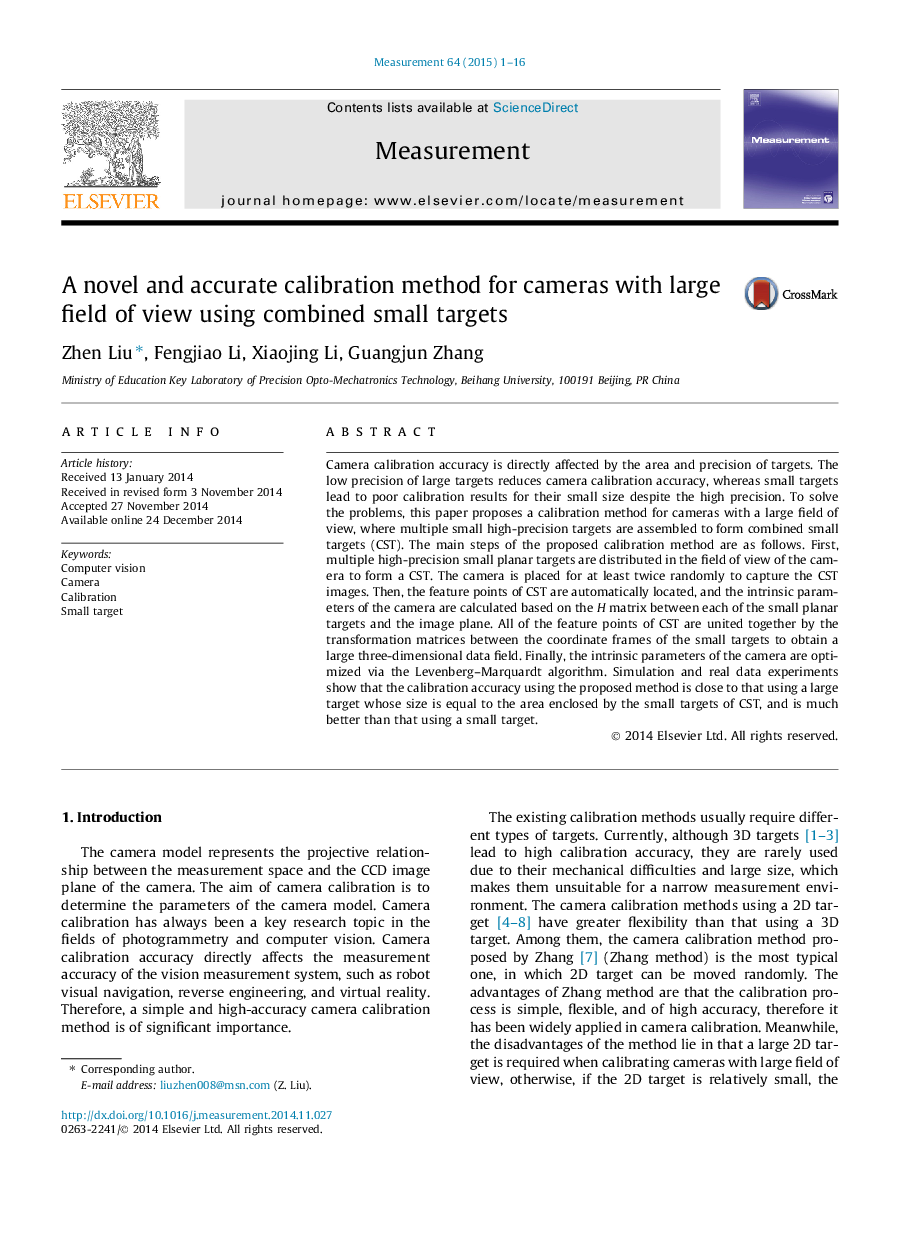| Article ID | Journal | Published Year | Pages | File Type |
|---|---|---|---|---|
| 727351 | Measurement | 2015 | 16 Pages |
•Combined small targets (CST) can be formed by the multiple small targets.•CST can be formed according to the FOV of a camera.•Calibration accuracy of using CST is close to that using a large target.•Calibration accuracy of using CST is much better than that using a small target.
Camera calibration accuracy is directly affected by the area and precision of targets. The low precision of large targets reduces camera calibration accuracy, whereas small targets lead to poor calibration results for their small size despite the high precision. To solve the problems, this paper proposes a calibration method for cameras with a large field of view, where multiple small high-precision targets are assembled to form combined small targets (CST). The main steps of the proposed calibration method are as follows. First, multiple high-precision small planar targets are distributed in the field of view of the camera to form a CST. The camera is placed for at least twice randomly to capture the CST images. Then, the feature points of CST are automatically located, and the intrinsic parameters of the camera are calculated based on the H matrix between each of the small planar targets and the image plane. All of the feature points of CST are united together by the transformation matrices between the coordinate frames of the small targets to obtain a large three-dimensional data field. Finally, the intrinsic parameters of the camera are optimized via the Levenberg–Marquardt algorithm. Simulation and real data experiments show that the calibration accuracy using the proposed method is close to that using a large target whose size is equal to the area enclosed by the small targets of CST, and is much better than that using a small target.
